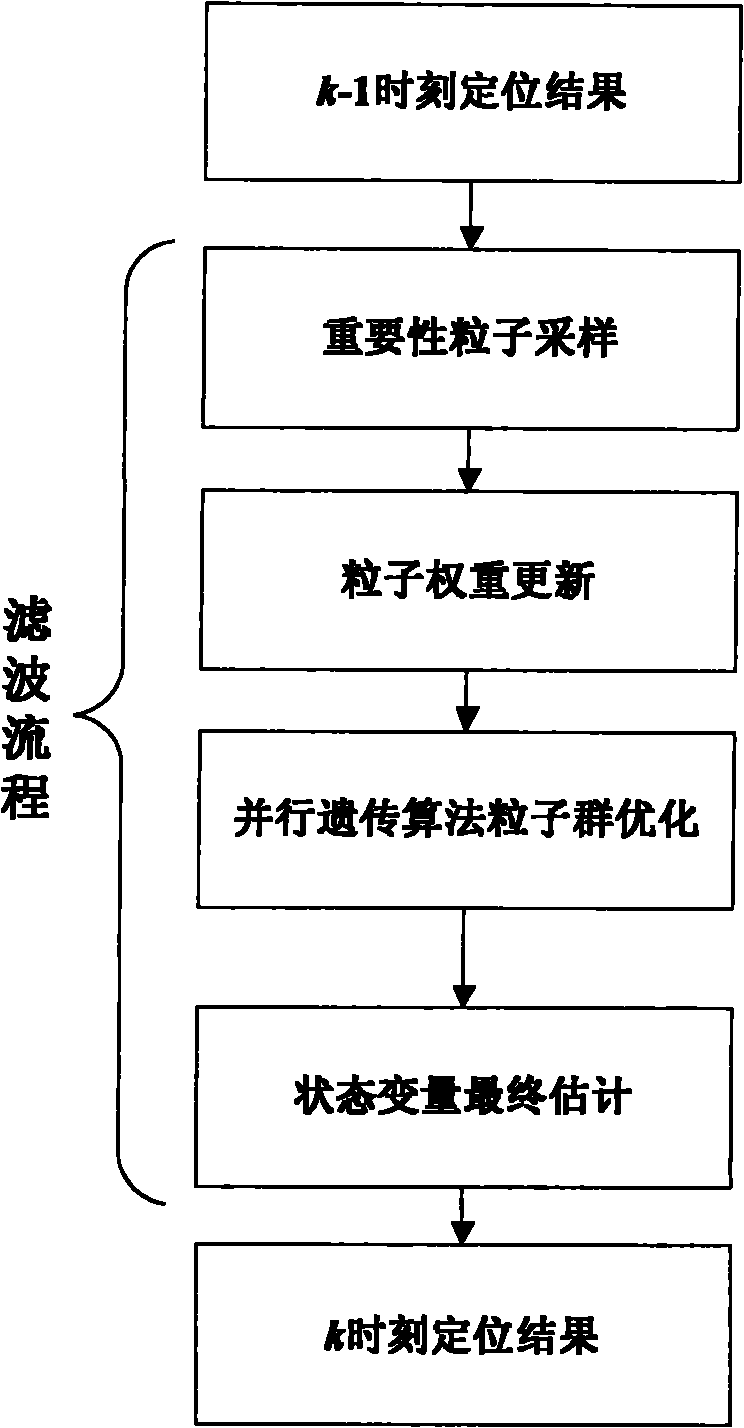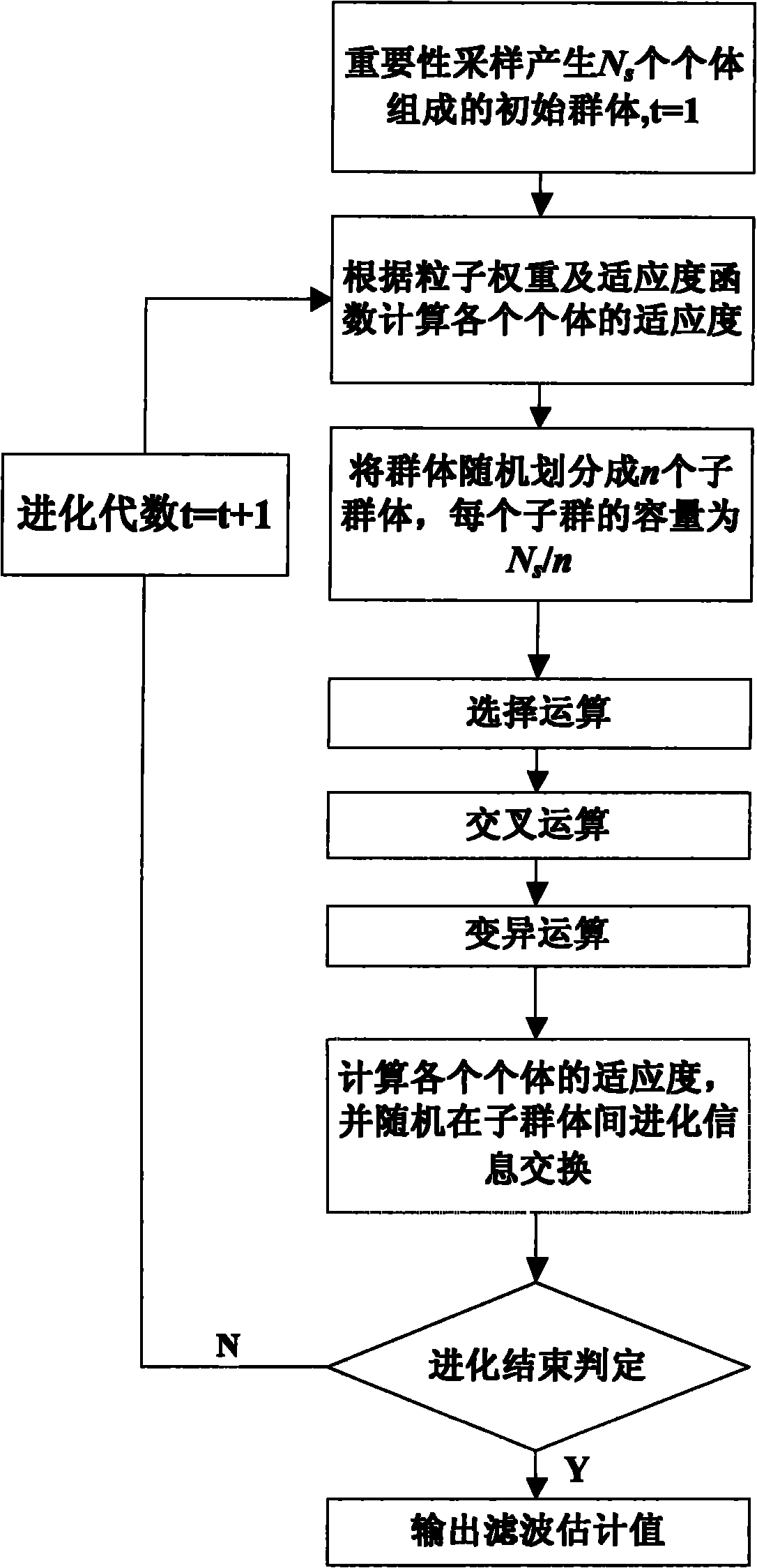Particle filter technology based on parallel genetic resampling
A genetic resampling and particle filter technology, applied in the field of nonlinear filtering algorithm, can solve problems such as premature phenomenon and affecting the application effect of genetic algorithm, so as to improve efficiency, improve comprehensive application performance, and improve the effect of scarcity problem
- Summary
- Abstract
- Description
- Claims
- Application Information
AI Technical Summary
Problems solved by technology
Method used
Image
Examples
Embodiment Construction
[0017] Particle filtering is a process of obtaining the minimum variance estimation of the state by finding a group of random samples propagating in the state space to approximate the probability density function, and replacing the integral operation with the sample mean. Usually the optimal importance distribution may not be able to be analyzed or sampled, so it is necessary to construct the importance distribution. Generally, the bootstrap particle filter uses the state transition distribution as the importance function, but because it does not use the latest observation information, it mainly depends on the system The model does not fully conform to the actual posterior distribution, especially when the observed data appear at the tail of the transition probability or the likelihood function is too concentrated compared with the transition probability, the filter may fail, which is also an important factor that causes particle filter degradation. reason.
[0018] Genetic al...
PUM
 Login to View More
Login to View More Abstract
Description
Claims
Application Information
 Login to View More
Login to View More - R&D
- Intellectual Property
- Life Sciences
- Materials
- Tech Scout
- Unparalleled Data Quality
- Higher Quality Content
- 60% Fewer Hallucinations
Browse by: Latest US Patents, China's latest patents, Technical Efficacy Thesaurus, Application Domain, Technology Topic, Popular Technical Reports.
© 2025 PatSnap. All rights reserved.Legal|Privacy policy|Modern Slavery Act Transparency Statement|Sitemap|About US| Contact US: help@patsnap.com



